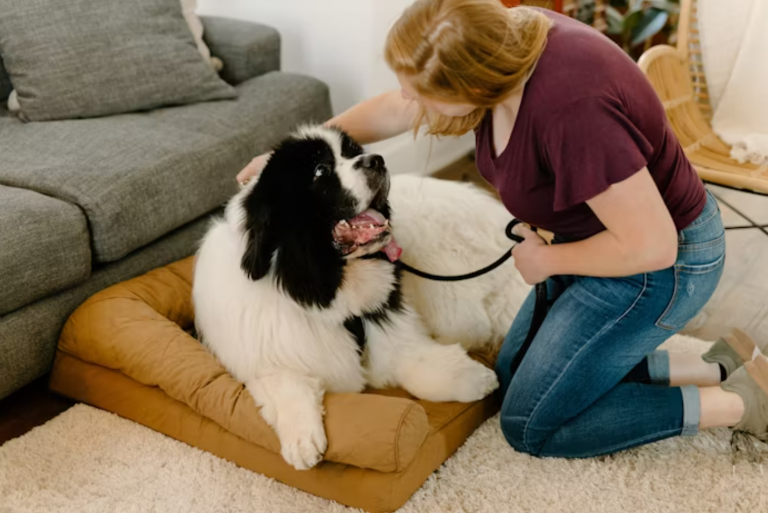
Introduction: The Daily Struggle with Pet Hair
If you’re a pet parent, chances are you’ve wrestled with the stubborn presence of pet hair. It clings to couches, embeds in carpets, and coats your clothes like it pays rent. But does it have to be this way? Not at all. With the right tools and techniques, pet hair removal becomes less of a chore and more of a routine you can actually manage.

Why Pet Hair Removal Is a Unique Challenge
Different Types of Pet Hair
Pet hair varies greatly depending on breed. Dogs like Huskies shed thick undercoats, while short-haired cats like Siamese leave behind fine, wispy hairs that are harder to spot but just as persistent. Understanding the hair type you’re dealing with is the first step to picking the right removal method.
Surfaces and Materials Affected
Some materials, like velvet and fleece, seem to magnetically attract pet hair. Others, like leather, resist it better. Tailoring your approach based on the surface—clothing, upholstery, flooring—is critical for effective hair removal.
Key Criteria for Choosing an Effective Pet Hair Remover
Efficiency and Speed
Time is precious. The best tools remove hair with minimal effort and strokes. Look for wide surface areas, ergonomic handles, and tools that don’t require constant refills.
Versatility Across Surfaces
A good remover should transition seamlessly between your car seats, clothes, and couch cushions. Versatile tools mean fewer gadgets—and less clutter.
Ease of Cleaning and Maintenance
You shouldn’t need a second gadget to clean the first one. Tools that self-clean or are easy to rinse off are worth the investment.
Durability and Value
Forget flimsy one-use sticky rollers. Reusable tools with long-lasting components pay off in the long run and reduce environmental waste.
Best Types of Pet Hair Removers
Lint Rollers
Pros and Cons: Classic and convenient, lint rollers are perfect for quick fixes on clothes. But they require constant refills, making them wasteful and less ideal for large surfaces.
Rubber Brushes and Gloves
How They Work: Rubber’s natural static attracts pet hair like a magnet. Simply don a rubber glove and sweep your hand across the surface—hair balls up and lifts away with ease.
Static Electricity Tools
When to Use Them: Tools like the Furminator or electrostatic pads excel on carpets and furniture. They generate static to pull hair from deep fibers.
Vacuum Cleaners with Pet Attachments
Features to Look For: HEPA filters, motorized brush heads, and strong suction are key. Brands like Dyson, Shark, and Bissell offer pet-specific models that outperform traditional vacuums.
Fabric Shavers and Pet Hair Sponges
Great for embedded fur, these tools exfoliate fabric and collect hair efficiently. They’re especially helpful for tightly woven fabrics where brushes fall short.
Top-Rated Pet Hair Removers in 2025
ChomChom Roller
This manual roller uses a fabric-based mechanism to lift and trap hair into a chamber—no power or sticky sheets required. It’s a top seller for good reason.
FurZapper Discs
Toss these silicone discs into your dryer, and they’ll attract hair from clothes and bedding while tumbling. It’s passive, low-effort, and surprisingly effective.
Dyson V15 Detect with Pet Head
A powerhouse vacuum with laser detection and an advanced filtration system. The pet hair head digs deep into carpets, while the laser reveals hidden hair on hard floors.
Lilly Brush Mini Pet Hair Detailer
Compact but mighty, this tool is perfect for car interiors or delicate fabrics. Its edge design scrapes embedded hair out with ease.
Room-by-Room Pet Hair Solutions
Living Room Furniture
Use rubber gloves or the ChomChom Roller to tackle sofas and armchairs. Consider fabric protectors or slipcovers that can be laundered regularly.
Carpets and Rugs
Vacuum weekly with a high-suction vacuum. For stubborn hair, sprinkle baking soda before vacuuming to loosen embedded fibers.
Clothing and Bedding
FurZapper discs or dryer sheets help dislodge hair in the laundry. For visible hair, a quick lint roller swipe does the trick before heading out the door.
DIY and Natural Pet Hair Removal Hacks
Damp Rubber Gloves Trick
Wet a rubber glove slightly and run it over surfaces. Hair clumps together and peels off easily—it’s oddly satisfying.
Fabric Softener Spray
Mix fabric softener and water in a spray bottle. Lightly spritz fabrics, let it dry, then brush the hair off—it reduces static and releases embedded strands.
Balloons for Static Power
Rub a balloon on your pet’s bed or furniture to create static, then roll it over the surface. It’s a fun hack that actually works.
Common Mistakes to Avoid When Removing Pet Hair
Don’t use the same tool on every surface. You wouldn’t use a vacuum on a silk dress or a lint roller on a wool rug. Also, don’t skip regular cleaning—build-up makes removal harder over time.
Maintenance Tips to Reduce Future Hair Buildup
Grooming Your Pet Regularly
A solid brushing routine keeps excess shedding under control. Use breed-specific brushes like slicker or deshedding tools to make it more effective.
Using Covers and Throws
Place washable covers on frequently used furniture. They catch fur before it gets embedded, making cleaning easier and less frequent.
Conclusion
Pet hair doesn’t have to take over your life—or your furniture. With the right tools and strategies, you can keep your home clean, your clothes fur-free, and your sanity intact. Whether you prefer the simplicity of a glove or the power of a high-tech vacuum, the goal is the same: a clean, comfortable space for you and your pet to enjoy together.
FAQs
1. What’s the most cost-effective pet hair remover?
The ChomChom Roller is a reusable and affordable solution that performs exceptionally well without needing refills.
2. Can I use a regular vacuum to remove pet hair?
You can, but pet-specific vacuums with HEPA filters and motorized brush heads are significantly more effective.
3. How do I prevent pet hair from sticking to clothes?
Use anti-static sprays, fabric softeners, or FurZapper dryer discs during laundry to reduce cling.
4. Are rubber gloves better than lint rollers?
Rubber gloves are more sustainable and versatile for large surfaces, while lint rollers are better for quick touch-ups.
5. How often should I groom my pet to reduce shedding?
Most pets benefit from grooming at least 2–3 times a week, but daily brushing is ideal during heavy shedding seasons.






